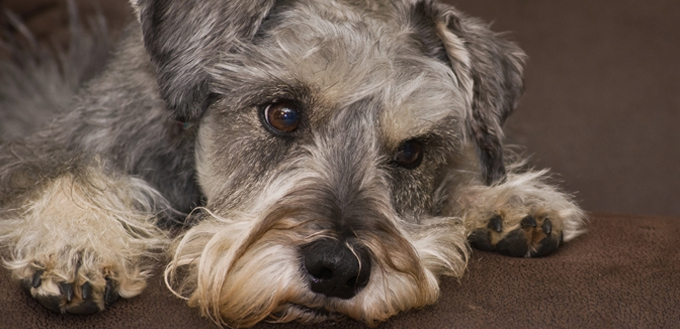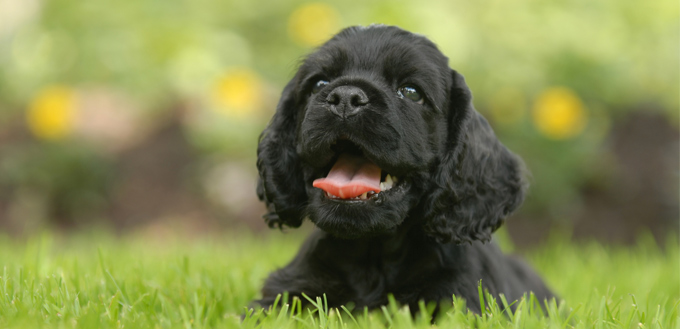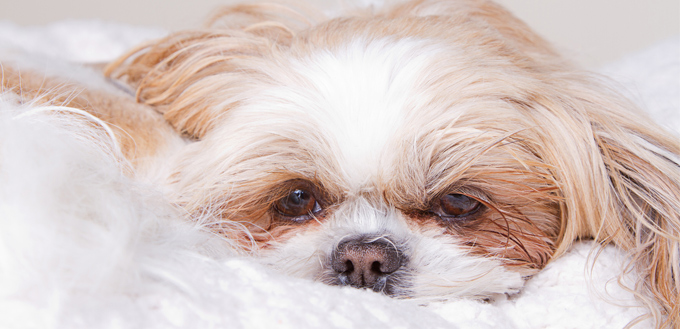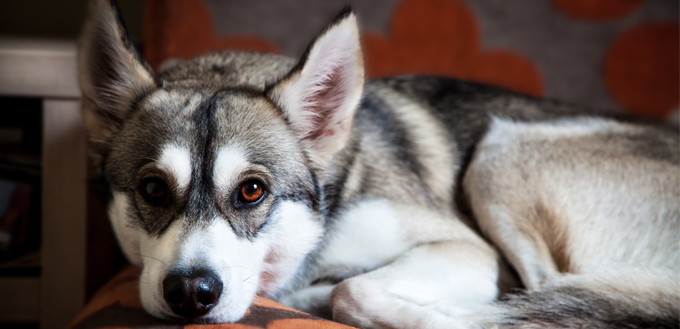We all know that cats are susceptible to puking out hairballs every now and then. But what about dogs? Although it’s more familiar with cats, turns out that dogs can also get hairballs. You don’t need to worry much about them, but they can eventually cause severe health problems. Therefore it’s wise not to ignore them completely thinking it’s normal.
So, what exactly are hairballs? How do dogs end up forming hairballs in their stomach? How can you possibly prevent them?
With so many questions stemming up in every dog parent’s mind, here in this article, we’ll explain which breed of dogs are prone to get hairballs and how you can prevent them from happening at all.

What is a Hairball?
Hairballs are trichobezoars. It means a wad of swallowed hair that is present in an animal’s stomach, which in turn, blocks their digestive system. Usually, dogs who inadvertently ingest their hair and fur during the self-grooming process will discharge that hair in their faeces. If the hair clogs up in their body, they are likely to gag or even vomit the mass from their body.
The bigger the hairball is in your dog’s stomach, the more they will be deprived off necessary fluids being absorbed within their body. Eventually, your little pupper would be very dehydrated, distressed and have little to no desire to eat. As we mentioned, hairball blocks their digestive tract and become infected, disrupting their normal digestion process. That’s why you shouldn’t overlook any of these symptoms in your canine.
What Causes Hairballs?
Dogs usually don’t encounter hairball problems, statistically speaking. However, even if they did since there are always exceptions everywhere, here are a few probable causes:
- Shedding
Does your pet dog have two layers of fur? Or possibly a longer coat? If yes, then your furry friend is prone to shedding a lot more than an average haired dog, and they will end up swallowing the fur that they are dropping, leading to cause a hairball. Usually, a dog sheds during spring, more specifically when their winter coat starts to wear off as summer approaches. In such cases, dog parents need extra care for their canine to ensure that their pet dog is not actually playing with their fur and eventually swallowing them.
You May Also Like: Dog Food for Shedding
- Eating Prey
You must have seen how your dog loves chomping on their prey – with all the furs and feather on it. Because animal hair is ingestible, it is likely that they’ll eliminate it with their faeces. However, if their digestive system is not strong enough, it will clog in their digestive tract or large intestines, whereby blocking other decaying faeces. It is life-threatening because the toxic gases and substances from such rotting materials will be absorbed again by the bloodstream.
- Excessive Licking
When your dog is in the process of self-grooming, they are very likely to swallow some of their hair. Too much licking also leads to hairballs. Of course, it is normal for your canine to groom themselves, but as their parent, you need to check if they are doing it excessively. Just for your information, here are some of the reasons why your dog may be overly licking themselves.
- Sleep deprivation:
If your dogs aren’t getting a good night’s sleep, they are likely to feel itchy and disturbed. To alleviate themselves, they will chew, bite and lick themselves. When their fur becomes too exposed to their own saliva, the coat starts to wear off. And when all this happens, your canine will swallow some of their skin in the process as well.
- Not enough activities
As you already know, mental stimulation is extremely important for dogs, otherwise, it causes boredom and boredom leads to such unnecessary diversions. To occupy their time, they will lick themselves. Moreover, they will find ways to drain their energy. If licking does the job, then they will possibly do it.
- Fleas
Fleas and ticks in dogs are terrible. This also causes them to lick themselves and wear off their hair. The itching and licking in them also cause hair loss. When your canine licks their fleas-affected fur, they are even licking those parasites. So, try to get rid of these parasites so that your canine does not touch their hair nor the parasites.

Some Warning Signs to Look for:
During winter, dry skin triggers irritation in dogs, which in turn induces them to lick or scratch themselves uncontrollably. Take note of this if you have a medium to a long-haired dog. Excessive licking and shedding could mean that hairballs are on the way. Take precautions immediately and do check for fleas and other parasites to avoid other skin problems from stemming.
Hairballs usually lead to terrible digestive problems since thin hairs are easy to pass into the stool. Many other warning signs include constipation, lethargy, diarrhoea and lack of appetite. In extreme cases, your dog may be gagging and feeling nauseous. They might even try to cough up unsuccessfully.
If unsuccessful heaving seems to be never-ending (typically lasts continuously for around 24 hours), you should immediately see your vet. Your vet may prescribe laxatives to solve this problem instantly. If the hairball hardens to an extent, whereby, other prescriptions seem hopeless, your little fellow may need to undergo surgery to remove the obstruction. This obstruction could be the cause of some severe problems; even considering death.
What are the Available Treatments for Hairballs?
There are a wide variety of products available in the market for you to treat your dog’s hairball. But do take note that not all of them address a specific case. Hairball comes in many stages. One that is in the early stages are still soft and can be eliminated quickly. However, the one that has been there in your dog’s stomach for a far more extended period has already hardened and may need some extra treatment. Besides, hairballs can be stuck in many different parts of their gastrointestinal tracts; namely the oesophagus, the small intestines or even their stomach.
Here are some of the possible solutions that you can apply to get rid of this issue:
- Petroleum Jelly
Offer some petroleum jelly to your pet to smoothen out the passage of the hairball, which can be passed either through their gastrointestinal tract or their throat. Moreover, petroleum jelly will help to soften up the hair clogged inside of them in case there has been too much of hair.
- Pumpkin
Pumpkin contains a large of fibre that is well-known to pull out the hairball through the gastrointestinal tract. Aside from that, pumpkin also supports the mucous membranes of their digestive tract that smoothens the process of releasing the hairball that was in their stomach.
- Laxatives
If you’re considering laxatives, make sure that you have taken your vet’s approval to do so. That’s because laxatives pose a significant effect on your furry friend’s body and will, therefore, have an impact on their overall health condition. However, they work as a great source of medication to treat hairball.
- Surgery
Unfortunate, but true that your canine may need to undergo an operation to get entirely well. If the hairs seemed to have stiffened or are too large to be eliminated through their anus, surgery is their last resort.

How Can I Prevent Hairballs from Developing at the First Place?
Of course, prevention is better than cure. And nothing could be better than preventing your furry friend from getting a hairball in the first place. This way, you’ll be eliminating any surgery or other painful ways of getting rid of it. Follow these steps to keep your pet dog away from hairball:
- Groom your pet more often
If you make a point to clean and brush your pet’s hair regularly, they won’t lose much hair and will get rid of dead skin cell more effectively. If your dog is medium-haired, try to brush them at least once a day before bedtime. A dog with a long coat will need to be cleaned at least twice a day, mainly during the shedding season. Make sure to completely get rid of their hair and keep them out of its reach. And for better results, use the best dog shampoo for your dog’s skin.
You may also like our guides on the Best Brush for German Shepherds, Best Dog Shedding Brush, and Best Brushes for Short Hair Dogs.
- Include an essential oil in their diet
First and foremost, make sure that your pet’s food is full of healthy ingredients. You could add in an essential oil to it. This will strengthen their fur and make it shine, too. Make sure that your furry friend is getting enough of nutrients through natural food or you may need to supplement them with Omega-3 and Omega-6 fatty acids.
- Treat allergies if they have any
If your pet dog seems to be constantly chewing and biting their skin, you may need to look at whether they are suffering from any allergies or not. Have him examined by your vet and get a proper guideline as to how you can stop them from excessively licking their skin.
- Give them enough water
Does your dog drink enough water? How do you know they do? We’ll help you in answering those questions. Just make sure that they have a smoother elimination throughout the day and you’ll know whether your pet is well hydrated or not. Smoother elimination process gets out smaller hairs out of their body through faeces. However, the amount of fluids that your pet needs in their body depends on their age, breed and activity level. Consult your vet regarding this.
You May Also Like: Dog Water Fountain
- Provide them with sufficient stimulation
Boredom can make your pet do weirdest of the activities of all. For instance, licking themselves drains their energy level and keeps them mentally occupied. So, they’ll choose to do that. Give him a toy or two that he can chew all day. The best option is if you take them for walks to prevent boredom and anxiety. And if you’re free or don’t have much to do, play with your pup. There’s nothing more than they enjoy than spending time with their parent. Bonding time is just as important as feeding them.
Which Dogs are Likely to Get Hairballs?
Some dogs are prone to get hairballs than others. Now you must be wondering if your dog falls under that category? Well, we’ve categorised three types of dogs who are most likely to hack hairballs; check if any of those matches your scenario:
- Dogs with medium to long hairs:
Great Danes, Chihuahuas and other short-haired breeds are not the candidates for hairballs. Shorthairs don’t tangle as much as long hairs do. On the other hand, it isn’t unusual for Border collies and poodles to get hairballs.
- Dogs suffering from skin problems:
It doesn’t matter if it’s due to fleas, ticks, allergies or other unique skin problems, any itchiness in their skin would cause them to scratch and lick their skin to alleviate themselves from the discomfort. Your canine will end up swallowing a lot of hairs while doing so.
- Dogs who are suffering from anxiety or emotional issues:
Make sure that your fellow canine is happy and healthy and not going through any stress, tension, anxiety or other psychological problems. Canines, when stressed would sit in one place and keep grooming themselves to feel better. While grooming, without their realization, they can take in a lot of hair, which would then cause a hairball.

Has Your Dog Ever Vomited Hairballs?
Hairballs are a pain! Not just for cats and dogs, but also their parents. Your dog might be all playful one day, suddenly the next day when they cough up those nasty hairballs, it could almost cause a heart attack for the parent. However, we believe that the tips mentioned above will help you prevent getting hairballs in your dog. And if you weren’t able to stop them, there are certain ways you can at least cure this issue.
Did your pet dog every a cough up hairballs or any unusual, unknown materials? Have you figured out any other ways to deal with the hairball problems? We’d love to know about your remedies! Contribute to the community and let us know in the comments below!
Sources:
- The Importance of Grooming Your Puppy, PetMD
- Dr. Pippa Elliott, MRCVS., How to Take Care of a Dog, WikiHow







That’s funny coincidence that I have medium sized and coated dog (BCmix) who was having scarey stomach problems for 2 weeks. When something solid came out it was like flat fur pellets and the distinguishable strand was from the little longish thin furred dog where we live. I gave him pumpkin, pedialyte, low sodium chicken bone broth, chicken breast and 1, 10 mg generic pepcid daily after experimenting. He spit out the rice.Generic imodium and the $10a pill anti nausea med from vet made him worse. Idk if this is his only problem but when he pooped those pellets out he started acting normal and drinking water, being hungry stopped pooping liquid. . However, still waiting for normal poop.
My little dog is a Yorky Pooh
She doesn’t shed; however we have a large dog that sheds continuously thought the year
Today my little one cough up a large hairball and it wasn’t her hair